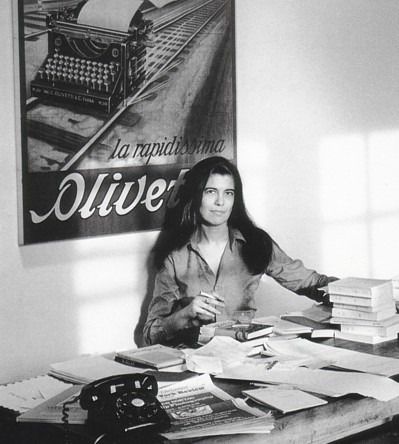OPTION 2:

“the modern style of interpretation excavates, and as it excavates, destroys; it digs “behind” the text, to find a sub-text which is the true one.” – Susan Sontag
I believe that by saying this, Sontag is elaborating on the contemporary style of reading – a style that we developed due to the analytical methods we are encouraged to use in both high school and college when we are exposed to both dated and modern literature. Ever since I began in depth anotated readings (back in high school when I was taking AP Composition and AP Literature courses, my teachers greatly emphasized the benefits of annotating while I read, of reading and re-reading, of picking apart the significant elements within a work and try and muster up an underlying understanding of what the author could have (or couldn’t have) meant. I don’t disagree with what she is saying, and I thoroughly understand where she’s coming from but I don’t necessarily agree 100% with this statement. The one aspect of this statement I disagree with is when she says that by embarking in this type of reading we will find, what she considered, the “true” sub-text. Who is to say that our own interpretation is the true one? Who is to say that there is in fact one interpretation that can be evolved. I believe that the reactions to a work, whether prose or not, is completely subjective and there is never on right or wrong answer.

“Hills Like White Elephants” by Ernest Hemingway
Initially, when I read “Hills Like White Elephants” I had just briefly skimmed the introduction providing a biography of Hemingway and a list of his works, therefore I was unaware of what the “operation” that the man in the story was encouraging the girl to get was an abortion. I actually thought he wanted her to get her tubes tied. However, even without knowing the nature of the operation, I was still uncomfortable with the relationship between this girl and the man because it seemed as if she was too eager to please him; I believed her to be a young girl, because this is what they depict her as, and it just doesn’t seem right to me for a young girl to be so eager to appease a man simply so he could react to her in the way that he did previously. Their relationship immediately reminded me of a book that I read last year, Lolita, in which a middle-aged man takes a strong liking to a young eleven year old girl, and they end up traveling from motel to motel, fugitives, living with an unacceptable love. The only difference that is in Lolita, the love is unrequited; Lolita does not love the older man. However, in this story it seems like this girl has deep feelings for this man, feelings that will allow her to consider getting an abortion to appease him. I could be mistaken about the age difference, but if they were close in age why would Hemingway refer to her as a “girl” and him as the “American.”
After reading, I youtubed the title and found a short film that gave me a different vision of the couple in the story. Does watching this video change the way you interpret it?



Wow, now I know why this short is about abortion.. I too skimmed the introduction part >< I saw her as a spoiled princess where the man was like a servant.